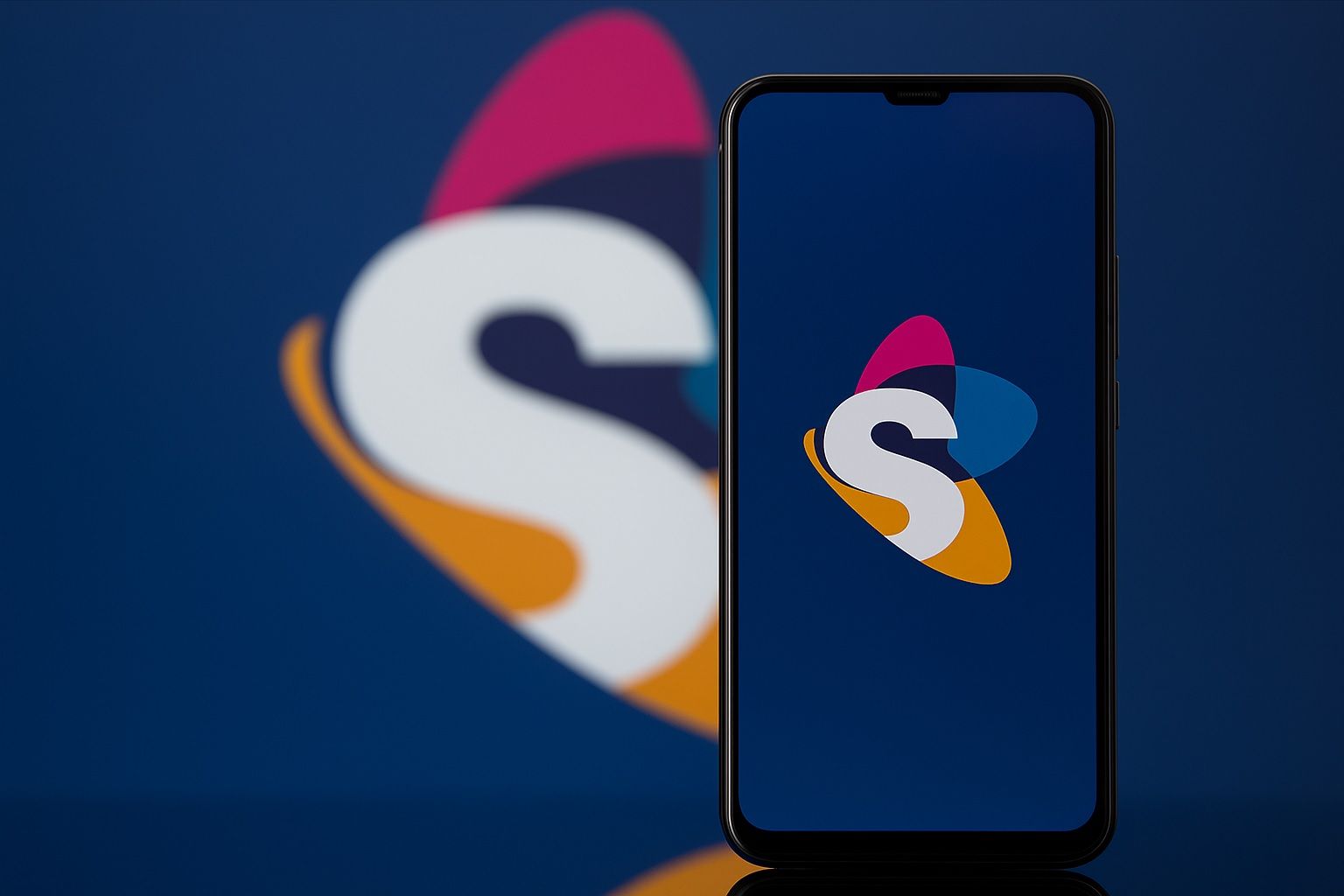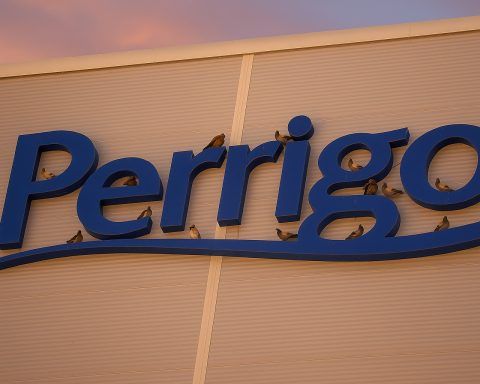- Stock Ticker: CHR (Nasdaq: CHR)
- Current Stock Price (Nov 5, 2025): ~$0.26 per share (surged ~90% intraday on buyout news) [1]
- Sector / Industry: Communication Services – Advertising & Digital Media
- Market Capitalization:Ultra-micro ~$2–5 million (pre-spike market cap was ~$1.5M)
- Recent Trading Volume:Extreme spike – ~316 million shares on Nov 5, 2025 (vs ~23.4M three-month avg)
- Exchange Listing: Nasdaq Capital Market (Class A Ordinary Shares)
Company Overview: A Niche Chinese Digital Ecosystem
Cheer Holding, Inc. is a China-based provider of advanced mobile internet infrastructure and digital content platforms. Through its subsidiaries, Cheer offers advertising and content production services in the Chinese market. The company has built a suite of consumer apps and services under the “CHEERS” brand, aiming to create an integrated digital ecosystem. Its flagship offerings include CHEERS Video (a short-video and live streaming app), CHEERS e-Mall (an e-commerce platform blending livestream shopping and online games), and CHEERS App which combines professionally-produced content with shopping features.
In recent years, Cheer Holding has pivoted heavily into emerging tech and AI-driven products. It operates CHEERS Telepathy, an AI content creation platform, and has rolled out apps like CheerChat (an AI-powered social app), CheerReal (an NFT/digital collectibles app), CheerCar (an interactive entertainment app), and even CHEERS Metaverse experiences. This broad portfolio blurs the line between online and offline, virtual and reality – the company’s vision is to integrate 5G, AR/VR, blockchain, and AI into a cohesive Web3.0 environment.
Business Model: Cheer primarily monetizes via digital advertising and content-driven commerce. Its CHEERS App Internet Business segment (which includes the video and e-commerce apps) generates over 90% of revenues, largely through advertising fees, brand partnerships, and sales commissions. The company also produces original short-form videos, variety shows, and live-stream content (the “Traditional Media” segment) to feed its platforms. By building user engagement in its apps (over 51 million MAUs on CHEERS Video and growing users on new AI platforms), Cheer aims to attract advertisers and merchants to its ecosystem.
Founded in 2016 and headquartered in Beijing, Cheer Holding was formerly known as Glory Star New Media Group Holdings Limited. It rebranded to “Cheer Holding, Inc.” in November 2023 – a change reflecting its “CHEERS+” digital ecosystem strategy. The company is incorporated offshore (Cayman Islands) and listed on Nasdaq, making it a U.S.-traded foreign private issuer. CEO Bing Zhang leads the firm (and notably was also listed as CFO), overseeing a lean team of ~122 employees.
Latest News: Buyout Proposals Send Stock Soaring
Big Premium Offers: On November 5, 2025, Cheer Holding stunned investors by announcing it received two preliminary non-binding proposals to acquire all of its outstanding shares. One offer came from an existing shareholder, Zhongsheng Dingxin Investment Fund, to purchase all Class A shares at $0.56 per share. The other offer, from Excel Ally Ventures Limited, offered $0.52 per share. These prices represent a huge premium of roughly 271%–300% above Cheer’s prior closing price around $0.14. In immediate reaction, CHR stock nearly doubled – shooting up about 93% in pre-market trading on Nov 5 and opening around $0.26. The frenzy saw trading volume explode to 300+ million shares (versus a usual ~23 million) as traders piled in on takeover hopes.
Cheer’s Board of Directors responded by forming a special committee of independent directors to evaluate the buyout bids and explore alternatives. The company cautioned that the proposals are non-binding and there is “no guarantee” a definitive offer or transaction will materialize. It plans to file the proposal letters on a Form 6-K with the SEC, transparently disclosing the offers to shareholders. For now, management has made no decisions and has warned investors not to rely on the news as a sure thing.
Analyst Insight: One M&A strategist noted that these dual bids “create a clear strategic review process but no transaction certainty.” The board’s independent committee and advisors will follow a standard takeover review, but the offers remain non-binding and could fall through, leaving timing and outcomes uncertain. In short, shareholders have reason to cheer the interest, but must wait to see if an actual binding deal – potentially to take the company private – is agreed in coming weeks or months.
Context – A History of Takeover Drama: This isn’t the first time Cheer Holding has been in buyout talks. In fact, the company (under its former name) previously agreed to a go-private merger at $1.55 per share, which was approved by shareholders but ultimately collapsed when the buyers failed to meet conditions [2] [3]. Cheer terminated that 2023 deal and its stock price plunged afterward [4]. A disgruntled investor sued, alleging the company misled shareholders about the merger’s prospects. However, in August 2025 a U.S. court dismissed the securities fraud class action, finding that Cheer had adequately disclosed the risks and no intentional deception was proven [5] [6]. This turbulent history underscores why management is extremely cautious about the new proposals – and why the market, while excited, hasn’t immediately priced CHR shares anywhere near $0.52–$0.56 yet (shares linger ~50% below the offer prices). The possibility of a lucrative buyout is on the table again, but trust must be earned through a concrete deal this time.
Product Innovation and Strategic Moves
Cheer Holding’s recent news hasn’t all been about M&A – the company is also touting tech innovations and strategic initiatives aimed at revitalizing growth:
- AI Platform Upgrade: On October 28, 2025, Cheer launched CHEERS Telepathy AI 3.0, a major update to its AI content creation platform. The new release features an AI Portrait Studio that can transform a single user photo into a plethora of professional-quality portraits across 1,000+ scenes and styles, within seconds. It even offers a one-click feature to turn photo albums into short videos – leveraging AI to make content creation effortless for users and influencers. Under the hood, Telepathy 3.0 uses Cheer’s in-house “Polaris Intelligent Cloud 3.0” AI model, which is 38% faster at generating 4K images and achieves ~98% accuracy in matching poses/lighting for realistic results. The AI was trained on 450 million high-res portraits and a special cultural dataset to better understand Eastern aesthetics. This kind of localized AI capability could give Cheer an edge in appealing to Chinese user tastes. The company is even opening up an API so brands and developers can integrate the AI portrait tech into their own apps. Overall, Telepathy 3.0 illustrates Cheer’s strategy to differentiate via cutting-edge AI and AR features – effectively “an AI photographer/retoucher/editor in your pocket” as the company boasts.
- Financing & Compliance: In early October 2025, Cheer Holding raised fresh capital and addressed a looming listing issue. The company priced a public offering of 12,686,565 units at $0.67 each, to raise roughly $8.5 million gross [7]. Each unit consisted of one Class A share (or a pre-funded warrant) plus two warrants for future share purchases. The offering closed on Oct 2, 2025, and the proceeds are earmarked for general corporate purposes like boosting sales & marketing [8]. Importantly, this capital infusion came as Nasdaq notified Cheer that its stock had fallen below the minimum $1.00 bid price requirement for 30 consecutive days. The sub-$1 share price put Cheer at risk of eventual delisting from Nasdaq. By raising funds and later announcing an exciting product (Telepathy 3.0) and now potential buyout bids, the company is clearly scrambling to turn around its fortunes. If the stock price doesn’t recover above $1, Cheer may need to consider another reverse stock split or further corporate actions to regain compliance. (In fact, the company already carried out a 1-for-10 reverse split in Nov 2023 to shore up its price after a prior slump.) The recent flurry of activity – new tech, new cash, and newfound buyout interest – can be seen as efforts to reassure the market and meet listing standards.
- Strategic Partnerships & M&A: Aside from organic product development, Cheer has signaled interest in strategic acquisitions to expand its capabilities. For example, in February 2025 it signed a letter of intent to acquire a 60% stake in Beijing Zhong Ke Zhi Guo Technology Co., a company presumably in a complementary tech field. Details on that deal’s status are scant, but it shows management’s intent to invest in growth opportunities (perhaps in AI or data tech). Additionally, Cheer in late 2024 authorized a massive $50 million share buyback program – a bold move given the company’s tiny market cap. This indicates the board believed the stock was severely undervalued. However, with shares crashing in 2025, it’s unclear how much of that buyback, if any, was actually executed. The authorization remains on paper as a potential support for the stock, but investors have yet to see a significant impact from it.
Financial Performance: Strong Cash, Slipping Profits
Despite its penny-stock price, Cheer Holding’s financials appear surprisingly robust in some areas. The company is profitable and cash-rich, though growth has stalled and margins are under pressure:
- Latest Earnings: For the first half of 2025 (H1 2025), Cheer reported $71.0 million in revenue, essentially flat year-over-year (vs $71.1M in H1 2024) [9] [10]. Net income was $7.8 million for H1, which, after a correction, reflects a significant drop from $12.4M in the prior-year period [11]. (The company initially announced $11.2M net profit but later issued a correction, revising it down to $7.8M [12] [13], citing an accounting error.) This 37% earnings decline is attributed to a mix of higher costs and lower margins. Gross profit margin slipped as the company had to reduce service fees charged to advertising clients amid tough competition [14]. Meanwhile, general & administrative expenses jumped by ~$2.8M due to increased share-based compensation, impacting the bottom line [15].
- Operational Metrics: Cheer’s user base metrics tell a tale of two trajectories. Its legacy CHEERS Video platform appears to have matured – downloads only grew 1.8% in the past year to 440 million, and monthly active users (MAUs) plateaued at ~51.1 million (a negligible +0.02% YoY). Essentially, the core short-video audience has stagnated, which is a red flag for future ad revenue growth. In contrast, newer offerings are showing promise: CHEERS Telepathy’s MAUs surged 263% year-on-year to reach 3.3 million users. Additionally, usage of Cheer’s open API services grew, with daily active integrations up ~47% to 470,000. These pockets of growth in AI and B2B integrations suggest the company’s pivot to next-gen platforms is gaining some traction – though from a small base.
- Balance Sheet & Cash: One of Cheer’s standout strengths is its balance sheet liquidity. As of June 30, 2025, the company held a whopping $203.2 million in cash and equivalents, and working capital of $284.5M. This cash pile is extraordinarily high relative to the firm’s tiny market value – in fact, Yahoo Finance calculates enterprise value at –$192 million (negative), indicating the market is valuing the whole business at far less than its net cash. Such a scenario usually points to either severe investor distrust or expectations of cash burn/asset impairment. For now, however, the cash is real and provides a substantial cushion for Cheer to fund R&D and marketing. Notably, the company generated positive operating cash flow of $3.9M in H1 2025, so it isn’t hemorrhaging money – Cheer’s core operations remain profitable on an adjusted basis. The strong liquidity also explains how the company can contemplate share buybacks or withstand delays in growth plans. It’s an ironic disconnect: on paper Cheer is financially healthier than most micro-caps (with a 72% gross profit margin and an 8.29 current ratio rated “GOOD” by InvestingPro analysts), yet the stock trades at distress levels.
- Trailing Valuation: Thanks to its depressed share price and positive earnings, Cheer’s valuation ratios are absurdly low. The stock’s trailing P/E is around 0.06 – essentially implying the market thinks the recent profits are not sustainable at all. For perspective, a P/E of 0.06 means an investor could (in theory) recoup their investment in earnings in well under one year, which is virtually unheard of. Similarly, price-to-sales is around 0.01, indicating the stock trades for almost nothing relative to its $140M+ annual revenue run-rate. Such extreme undervaluation often signals that investors fear some hidden risk (for example, difficulty in repatriating cash from China, potential accounting issues, or expected decline in future earnings). It’s clear that confidence in management and the business outlook is very low, and the market is pricing Cheer more like a trapped value or liquidation scenario rather than a going concern with growth prospects.
Stock Performance: From High-Flyer to Penny Stock
Cheer Holding’s share price has been on a wild ride over the past two years, ultimately resulting in a catastrophic collapse for long-term holders:
- 2020–2022: As Glory Star New Media, the company went public via SPAC in early 2020 and for a time traded on promising growth in China’s booming mobile media market. By mid-2021 it was generally around the $1–2 range. In September 2022, the company received that $1.55 go-private offer, which lifted the stock near the offer price. However, when the deal fell apart by mid-2023, the stock nosedived below $0.20, prompting the 1-for-10 reverse split in late 2023 to keep Nasdaq listing. Post-split, shares were about $0.34 (effectively ~$0.034 pre-split).
- 2024 Surge and Crash: In early 2024, Cheer Holding (with new ticker CHR) experienced an eye-popping rally. The stock at one point hit a 52-week high of $3.45 in a speculative surge (likely driven by retail traders and brief enthusiasm over its AI announcements and share buyback news). For context, $3.45 post-split equals an astronomical 100x gain from its late-2023 lows – truly a rollercoaster. Unfortunately, those gains didn’t last. Throughout 2024 and into 2025, CHR gave up virtually all the ground, plummeting over 95% from its peak to trade back in the penny-stock basement. By October 2025, the share price was languishing around $0.12–$0.14 – perilously close to its all-time lows (~$0.11). The slide was fueled by dilution (from new share issuance), lack of growth, and perhaps a general sell-off in China-based microcaps.
- 2025 Volatility: This year has been extremely volatile for CHR. Even before the November 5 buyout spike, the stock had sporadic swings. For example, on Oct 3–4, around the Telepathy 3.0 launch and offering news, CHR jumped about 8% in one day then slid back. On Nov 3, 2025, volume spiked to 77.7M shares and the stock briefly popped to $0.18 intraday [16], perhaps on rumors of incoming news. After the official acquisition proposal announcement on Nov 5, the stock’s surge to ~$0.26 marks its highest level in months – though still a far cry from where it was a year ago. Even after this rally, Cheer Holding remains down ~95% year-to-date in 2025 and similarly over the past 12 months. In other words, it would take many more days like Nov 5 (and ideally an actual buyout at $0.50+) for long-term shareholders to recover a meaningful portion of their losses.
Investors should note that liquidity in CHR stock has dramatically increased lately. Prior to October, daily volume was relatively low (often under 1 million). But the stock has become something of a day-trader/speculator magnet in Q4 2025, with tens of millions of shares changing hands on news. This heightened activity can lead to rapid price swings. Case in point: at $0.26 per share, the entire company’s market cap is only ~$5 million, so it doesn’t take a ton of capital flow to move the price significantly. Caution is warranted, as low-priced stocks can be volatile and prone to outsized jumps or drops on any catalyst.
Analyst Sentiment and Forecasts
Coverage of Cheer Holding by Wall Street analysts is sparse to nonexistent – not surprising given its tiny size and huge volatility. Most major banks do not actively research companies under $100M market cap. That said, there have been a few analyst actions and commentary worth noting:
- Deutsche Bank & Cowen (2024): Back when CHR was trading in the $2–3 range, at least two banks had minimal coverage. In November 2024, Deutsche Bank adjusted its price target to $3.10 (from $2.85) with a Hold rating, and TD Cowen downgraded the stock to Hold [17]. These lukewarm assessments signaled that even at a few dollars, analysts were cautious on Cheer’s prospects. Those targets are now totally out of reach given the subsequent crash – illustrating how quickly fundamentals and sentiment can deteriorate for a microcap. It appears both firms have since dropped coverage or gone quiet as the stock fell below $1.
- TipRanks Analyst & AI Ratings: According to TipRanks data, the most recent human analyst rating on CHR (as of Oct 2025) was “Hold” with a $0.50 price target [18]. This suggests at least one analyst somewhere sees fair value around $0.50 – notably in line with the current buyout proposals. Beyond human analysts, TipRanks’ AI-driven analyst “Spark” currently rates CHR as Neutral, reflecting a mixed bag of signals [19]. Spark’s commentary highlights “Cheer Holding’s strong financial performance… high profitability margins and a solid balance sheet” as key strengths, “however, technical analysis indicates bearish momentum, and the low P/E ratio suggests undervaluation but also potential market skepticism.” [20] In essence, the AI recognizes the deep value fundamentals but also the reality that the market doesn’t trust this value – a fair summary of the situation.
- Growth Forecasts: One surprisingly optimistic data point: analysts (or algorithms) on InvestingPro projected ~78% revenue growth for FY2025. If true, that would imply around $200+ million revenue for 2025, which seems aggressive given flat sales in H1. It’s possible this forecast assumes new products (like Telepathy AI and other apps) or acquisitions start contributing significantly in late 2025. However, without any direct guidance from the company, such rosy projections should be taken with a grain of salt. They do underscore that if Cheer’s AI initiatives or other monetization plans gain traction, the upside could be substantial. For now, though, the consensus is essentially no consensus – traditional analysts are mostly on the sidelines, and the stock’s direction is being driven more by headlines than spreadsheets.
Risks and Controversies
Investing in Cheer Holding comes with elevated risks on multiple fronts:
- Nasdaq Delisting Risk: As mentioned, CHR has been out of compliance with Nasdaq’s $1.00 minimum bid requirement. The company likely has a grace period (usually 180 days) to cure the deficiency, potentially via a reverse split or sustained price improvement. Failure to do so could result in delisting to the OTC market, which would significantly reduce liquidity and visibility. The recent surge to ~$0.26 is still far from the $1 threshold – so this risk is very real unless a corporate action or dramatic rally occurs. Management has navigated this before (the 2023 reverse split) and will presumably do so again if needed.
- Dilution and Share Structure: Cheer’s October financing issued a large number of shares plus warrants that could lead to further dilution. If all those warrants get exercised (likely at prices near $0.67 or below), the share count will increase substantially, diluting existing shareholders’ stakes. This overhang can weigh on the stock price. Moreover, the company’s capital structure includes Class B shares held by insiders (common in Chinese issuers, though not explicitly detailed in sources here) – which might concentrate voting power and limit outside shareholders’ influence on decisions like buyouts.
- Corporate Governance and Trust: The fact that Cheer had to correct its financial results in 2025 (restating net income from $11.2M to $7.8M) raises concerns about internal controls [21]. While the error was acknowledged and fixed, it doesn’t inspire confidence in the accounting accuracy. Additionally, the prior failed go-private deal in 2023 left some investors feeling burned, as evidenced by the lawsuit. Although the court dismissed the case [22], the episode may make shareholders skeptical of management’s ability to execute major transactions. Any new buyout offers will likely be scrutinized for seriousness (e.g. proof of funds from bidders) given that history.
- Market Competition: Cheer is operating in highly competitive arenas – from short video (dominated by ByteDance’s Douyin/TikTok in China) to e-commerce livestreaming (dominated by giants like Alibaba and Pinduoduo) to AI apps (countless startups and big players). The company already cited that its advertising service fees were under pressure due to competition [23], and that CHEERS e-Mall revenue declined as users opted for other livestream shopping platforms. There’s a risk that Cheer’s platforms won’t achieve the scale to compete effectively, especially if user growth on flagship apps remains flat. Its strategy to focus on niche AI features is clever, but larger tech firms could replicate those if the concept proves lucrative.
- Geopolitical and Regulatory: As a China-focused tech firm listed in the U.S., Cheer faces the usual geopolitical risks. Regulatory crackdowns in China on data, internet content, or foreign listings could impact its operations. Meanwhile, U.S. regulators have increased scrutiny on auditing standards for U.S.-listed Chinese companies. Any failure to meet PCAOB audit requirements or if China restricts data sharing, Cheer (like others) could face potential delisting or sanctions. There’s no specific red flag on this front for Cheer right now, but it’s an underlying risk factor.
- Liquidity & Volatility: Finally, the extreme volatility of CHR cannot be overstated. This stock can easily swing 20–30% (or more) in a day based on a single press release or even social media rumors. While that offers trading opportunities, it also means high risk of loss. The stock’s beta is likely off the charts, and it is not suitable for conservative investors or those who cannot monitor positions actively. A small-cap like this can be manipulated or move on low volumes in unpredictable ways.
Outlook: Cautious Optimism or More Turbulence Ahead?
Looking forward, Cheer Holding sits at a crossroads. On one hand, the company has significant assets – a strong cash position, real revenues, and intriguing new technology products – that could facilitate a turnaround or make it an attractive takeover target. On the other hand, the market’s lack of faith (evidenced by the rock-bottom valuation) signals that without a concrete catalyst, CHR may continue to drift or decline.
Buyout Potential: The most immediate catalyst is obviously the potential acquisition of the company. If either of the ~$0.54 average offers proceeds to a binding deal, shareholders could see a further 100%+ upside from current levels to approach the deal price. There’s also the possibility that these two bidders (one of which is already a shareholder) could spark a bidding war or attract additional offers. In a best-case scenario, the special committee might negotiate a higher price or more favorable terms. However, given Cheer’s history, investors remain wary. It’s entirely possible no deal gets finalized – for example, bidders could walk away after due diligence, or regulators could object (if foreign ownership is an issue). In that case, the downside for the stock would be significant, as the price would likely retreat from the buyout-fueled spike. Essentially, CHR is now trading as an “event-driven” stock; its near-term fate hinges on M&A outcomes.
Standalone Prospects: If Cheer continues as an independent company, it must prove it can reignite growth. The launch of Telepathy 3.0 and other AI initiatives show management’s bet on innovation. If those efforts translate into user growth (which early signs show for Telepathy MAUs) and eventually new revenue streams, Cheer could stabilize its declining profits. The company’s own optimism (or at least that of some analysts) for late 2025 revenue ramp-up suggests there are projects in the pipeline – perhaps new partnerships or monetization of its AI platform – that could boost sales. Moreover, with over $200M cash in the bank, Cheer has the firepower to invest in marketing or acquisitions to expand its user base. It could also choose to return value to shareholders through buybacks (though thus far it hasn’t materially done so). The key will be execution: can this small firm turn its flashy tech demos into sustainable revenue growth?
Valuation vs. Reality: At the current penny-stock price, one could argue “How much worse can it get?” – the company is valued at essentially cash minus a huge discount. If no catastrophe befalls Cheer (like fraud or bankruptcy), theoretically the downside is limited by that cash value. In practice, however, that cash is only valuable if managed well. Market skepticism remains high, likely due to concerns over corporate governance, the China factor, and the risk that management might spend the cash on futile projects or let it dwindle. For investors, it’s a classic deep-value quandary: a stock priced for disaster, but with numbers that suggest it shouldn’t be. Sometimes the market eventually corrects such mispricing – possibly via a buyout or activist involvement – but sometimes the pessimism is proven right.
Bottom Line: Cheer Holding’s story combines the excitement of cutting-edge tech and M&A intrigue with the peril of a micro-cap in distress. The near-term narrative will be dominated by the buyout process. If a deal closes around the offered prices, it would mark a happy ending for shareholders who endured the 95% drop – a chance to cash out at a premium (albeit still far below last year’s highs). If not, investors will be left with a struggling advertising/tech business that needs to find its footing in a competitive market. There is a ray of hope in the company’s innovation and financial resources, but it will take time and trust-building for Cheer Holding to truly cheer up the market again.
Sources:
- Company business description and segments; Name change from Glory Star in Nov 2023.
- Recent buyout proposals of $0.56/$0.52 per share and Board response; stock’s 95% pre-market surge on Nov 5, 2025; extraordinary trading volume vs. average.
- Commentary on non-binding nature of offers and special committee formation.
- Prior failed $1.55 go-private deal and lawsuit dismissal (Lu v. Cheer Holding) [24] [25].
- CHEERS Telepathy AI 3.0 launch details (AI Portrait Studio, Polaris engine, 450M dataset); Company’s self-description as mobile internet/AI platform provider.
- Public offering of 12.7M units at $0.67 for $8.5M, Nasdaq $1.00 bid compliance issue.
- Half-Year 2025 financial results: $71M revenue, $7.8M net (corrected) [26] [27]; cash $203M and strong liquidity [28] [29]; decline in gross margin and profit due to competition and expenses [30].
- User metrics: CHEERS Video ~51.1M MAUs (flat) vs. Telepathy 3.3M MAUs (+263% YoY); other metrics like API integrations +47%.
- Market valuation ratios: market cap ~$1.5M pre-spike, trailing P/E ~0.06, enterprise value ~$-192M (Yahoo/StockAnalysis).
- 52-week range $0.11–$3.45; YTD and 1-year performance ~–95%.
- Recent trading prices and volumes (Investing.com, Yahoo Finance data) [31].
- Deutsche Bank $3.10 Hold and TD Cowen Hold (Nov 2024) [32].
- TipRanks analyst rating $0.50 Hold [33] and AI Spark Neutral analysis (strong financials vs bearish technicals) [34].
- InvestingPro outlook: 78% FY2025 revenue growth forecast (optimistic scenario).
- Nasdaq reverse split history and compliance actions.
References
1. www.marketscreener.com, 2. app.midpage.ai, 3. app.midpage.ai, 4. app.midpage.ai, 5. app.midpage.ai, 6. app.midpage.ai, 7. www.tipranks.com, 8. www.tipranks.com, 9. www.quiverquant.com, 10. www.quiverquant.com, 11. www.quiverquant.com, 12. www.quiverquant.com, 13. www.quiverquant.com, 14. www.quiverquant.com, 15. www.quiverquant.com, 16. finance.yahoo.com, 17. www.marketscreener.com, 18. www.tipranks.com, 19. www.tipranks.com, 20. www.tipranks.com, 21. www.quiverquant.com, 22. app.midpage.ai, 23. www.quiverquant.com, 24. app.midpage.ai, 25. app.midpage.ai, 26. www.quiverquant.com, 27. www.quiverquant.com, 28. www.quiverquant.com, 29. www.quiverquant.com, 30. www.quiverquant.com, 31. finance.yahoo.com, 32. www.marketscreener.com, 33. www.tipranks.com, 34. www.tipranks.com





